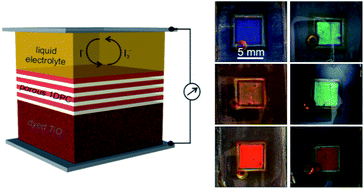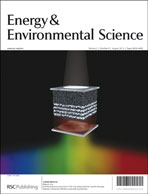Herein we analyze experimentally the effect that introducing highly reflecting photonic crystals, operating at different spectral ranges, has on the conversion efficiency of dye sensitized solar cells. The interplay between structural colour and cell performance is discussed on the basis of the modified spectral response of the photogenerated current observed and the optical characterization of the cells. We demonstrate that, with the approach herein discussed, it is possible to achieve relatively high efficiencies using thin electrodes while preserving transparency. At the same time, the appearance of the device can be controllably modified, which is of relevance for their potential application in building integrated photovoltaics (BIPV) as window modules.
You have access to this article
 Please wait while we load your content...
Something went wrong. Try again?
Please wait while we load your content...
Something went wrong. Try again?


 Please wait while we load your content...
Please wait while we load your content...